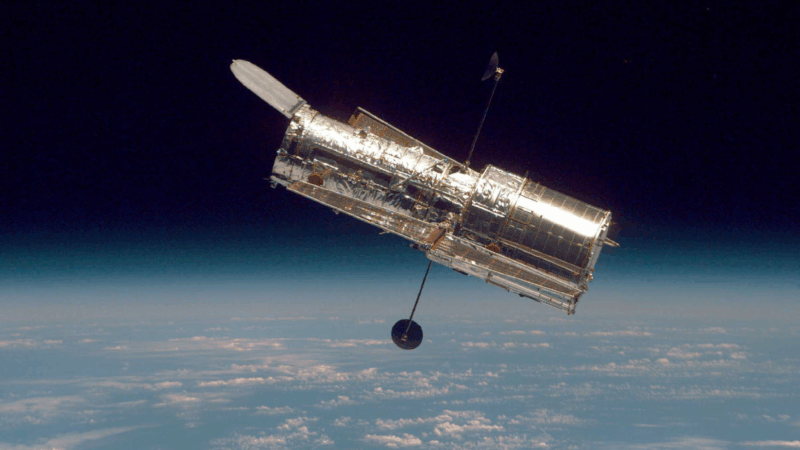Hoping to revive mammoths, scientists create ‘woolly mice’
Scientists have genetically engineered mice with some key characteristics of an extinct animal that was far larger — the woolly mammoth.
This “woolly mouse” marks an important step toward achieving the researchers’ ultimate goal — bringing a woolly mammoth-like creature back from extinction, they say.
“For us, it’s an incredibly big deal,” says Beth Shapiro, chief science officer at Colossal Biosciences, a Dallas company trying to resurrect the woolly mammoth and other extinct species.
The company announced the creation of the woolly mice Tuesday in a news release and posted a scientific paper online detailing the achievement. Scientists implanted genetically modified embryos in female lab mice that gave birth to the first of the woolly pups in October.
“This is really validation that what we have in mind for our longer-term de-extinction project is really going to work,” Shapiro told NPR in an interview. The company says reviving extinct species like the mammoth, the dodo and others could help repair ecosystems. Critics, however, question whether de-extinction would be safe for the animals or environment.
Shapiro and her colleagues started by trying to identify the genes responsible for making mammoths distinctive. They compared ancient samples of genetic material from mammoths with genetic sequences of African and Asian elephants, the mammoth’s closest living relative.
These included long, woolly hair and a way of metabolizing fat that helped the animals survive well in the cold.
“And then we look in the mouse for those same genes and instances where those genes have been involved with making a woolly coat, or longer hair, or changing the color of the hair,” Shapiro says.

The researchers used the latest genetic engineering techniques to make a combination of modifications based on what they found in the mammoth genomes and in mouse DNA in the hopes the changes would produce the desired attributes in the offspring. And the experiment appears to have worked.
“We ended up with some absolutely adorable mice that have longer, woolly, golden-colored coats,” Shapiro says.
The mice also have fat similar to the mammoth, Colossal says, enabling them to survive in cold weather.
“This is exciting to us because it confirms that the genes and gene families that we identified using our comparative genomics approach really do cause an animal to have a woolly coat and a golden coat and longer hairs,” Shapiro says. “And this is the way that we’re going to create mammoths for the future.”
They hope to do that by editing the genes in the embryos of Asian elephants and implanting the modified embryos into female elephants so that they can give birth to calves with the key traits that made the mammoths distinctive.
Other researchers say the woolly mice are exciting.
“I’m pretty skeptical about this, but that mouse is pretty adorable,” says Vincent Lynch, a professor of biology at the University at Buffalo. “And for people like me who want to understand the genetic basis of traits, this is particularly impressive.”
But Lynch and others caution: A mouse is not an elephant. So who knows if they could do the same thing with that species?
And even if they could, Lynch is among those who don’t think bringing back the mammoth is a great idea. The money would be better spent saving species on the brink of extinction, critics say.
“The focus on de-extinction or genome-modified organisms as a conservation tool I believe is a distraction from the work that needs to be done” to conserve species, says Gabriela Mastromonaco, senior director of wildlife science at the Toronto Zoo. “There’s species disappearing every day.”
In addition, who knows what unintended consequences could result from introducing herds of mammoth-like elephants into the Arctic?
“They sort of want to mess around on a pretty large scale,” says Karl Flessa, a professor of geosciences at the University of Arizona “I don’t know what the downside of having a bunch of hairy Asian elephants stomping around in the tundra might be. I don’t know what would happen. They don’t know what would happen. They can’t really assure me that, ‘Oh, everything will be just fine. Everything will be just like it was back in the Pleistocene.’ I’m not ready to play God like that.”
For their part, Shapiro and her colleagues defend their project. They say reintroducing mammoth-like creatures could benefit the environment by helping repair ecosystems where the mammoth once lived.
“Our intention is to re-create these extinct species that played really important roles in ecosystems that are missing because they’ve become extinct,” Shapiro says.
In addition, the technologies the company is developing could be used to try to protect living species, says Ben Lamm, Colossal’s co-founder and CEO.
“Current conservation models work. They just don’t work at the speed at which we are changing the planet and eradicating species,” Lamm says. “So we need new tools and technologies so we can engineer life in a better way that’s more adaptable to be co-existent with humans.”
Colossal hopes to produce mammoth-like Asian elephant embryos by next year and their first calves by 2028.
The company is also working on bringing back the dodo bird and the Tasmanian tiger.
Light from satellites will ruin majority of some space telescope images, study says
Astronomers have long been concerned about reflections from satellites showing up in images taken by telescopes and other scientific instruments.
Defense Department is reviewing boat strike video for possible release, Hegseth says
In a speech on Saturday, Defense Secretary Pete Hegseth defended the strikes, saying: "President Trump can and will take decisive military action as he sees fit to defend our nation's interests."
Bama, Miami in, Notre Dame out and Indiana No. 1 in College Football Playoff rankings
Nobody paying attention for the past 24 months would be surprised to see Indiana – yes, Indiana – leading the way into this year's College Football Playoff.
McLaren’s Lando Norris wins first F1 title at season-ending Abu Dhabi Grand Prix
Red Bull driver and defending champion Max Verstappen won the race with Norris placing third, which allowed Norris to finish two points ahead of Verstappen in the season-long standings.
A ban on feeding pigeons ruffles lots of feathers in Mumbai
The pigeon population has exploded — a result of people feeding the birds. For some it's a holy duty and a way to connect to nature. Critics point to health risks tied to exposure to pigeon droppings.
UN humanitarian chief: world needs to ‘wake up’ and help stop violence in Sudan
The UN's top humanitarian and emergency relief official has told NPR that the lack of attention from world leaders to the war in Sudan is the "billion dollar question".







